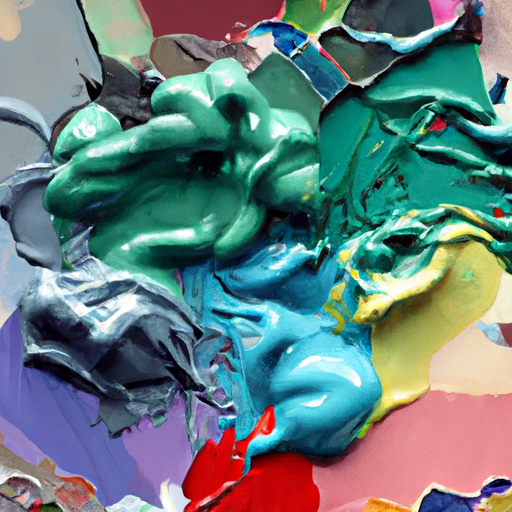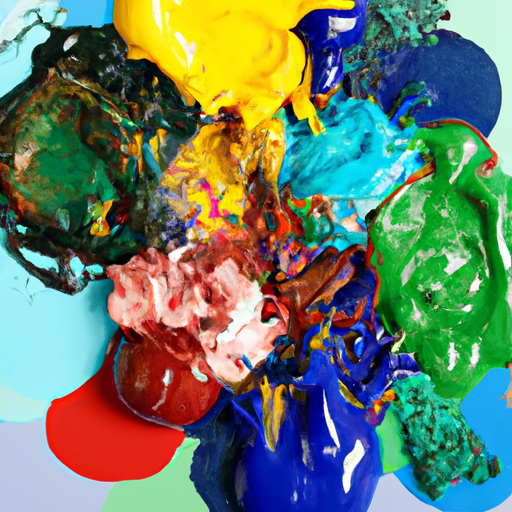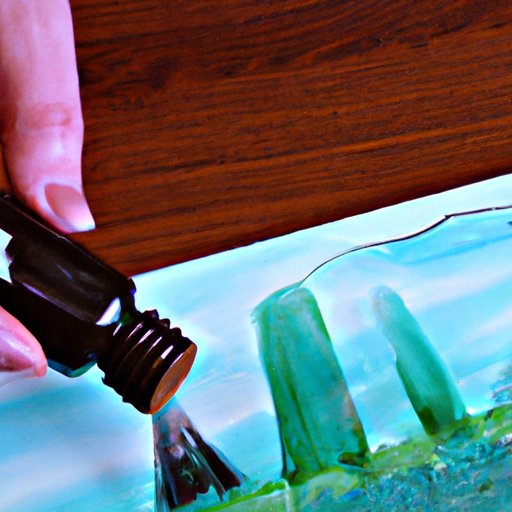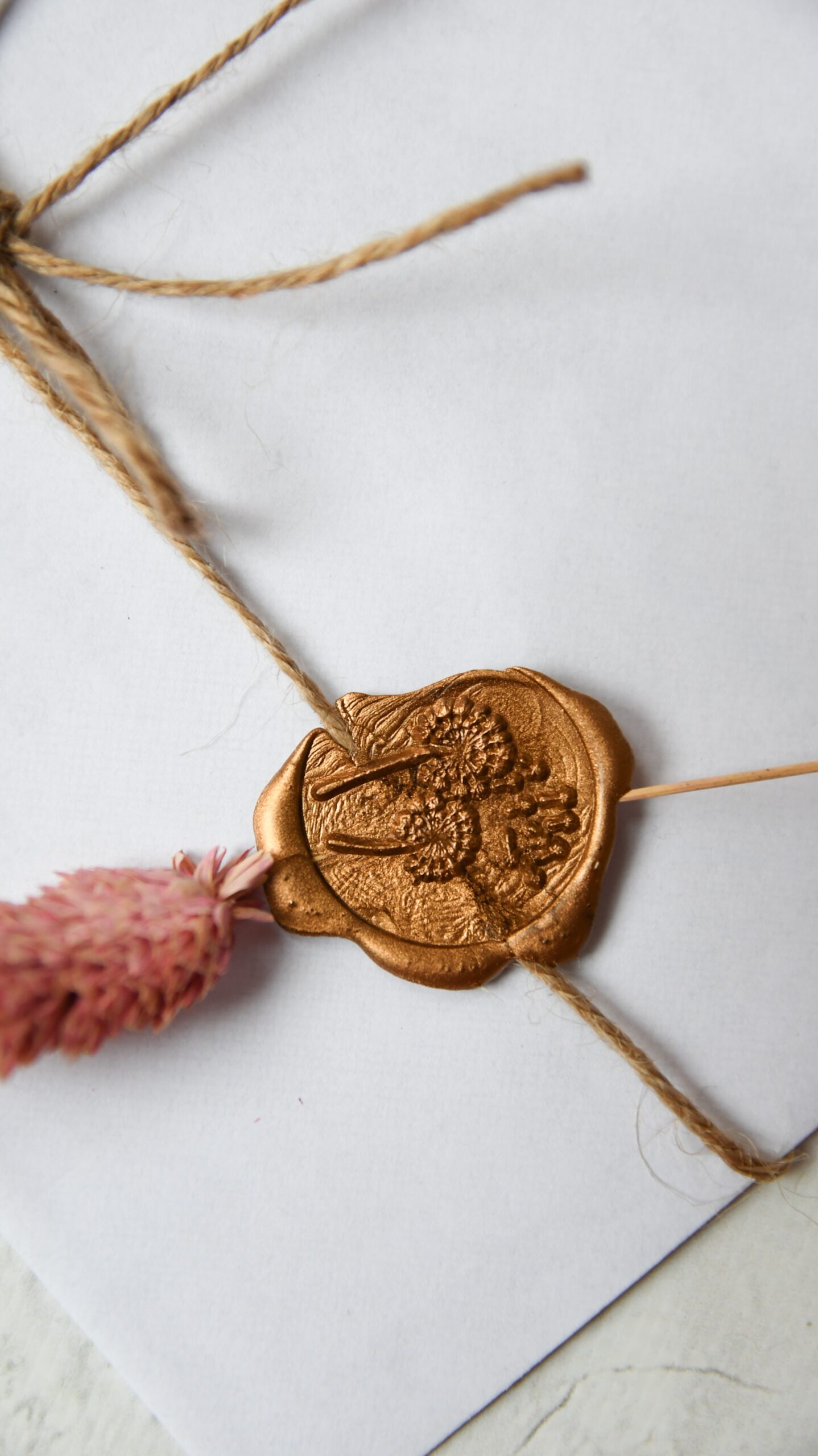In this article, you will discover an easy and effective method for mixing acrylic paint with epoxy. Whether you’re a novice artist or a seasoned professional, this technique will help you achieve stunning and vibrant results in your artwork. By following these simple steps, you’ll be able to create beautiful and durable pieces that will leave a lasting impression. So, let’s get started on this exciting journey of combining acrylic paint with epoxy!
Preparing the Materials
Gathering the Supplies
Before you begin mixing acrylic paint with epoxy, it’s important to gather all the necessary supplies. You will need acrylic paint in your desired colors, epoxy resin, mixing cups, stirring sticks, a measuring scale, gloves, and a well-ventilated work area. Make sure you have all these items ready before you start the mixing process to ensure a smooth and hassle-free experience.
Choosing the Right Acrylic Paint
To achieve the desired results, it is crucial to select the right type of acrylic paint. Look for high-quality acrylic paint that is labeled as suitable for mixing with epoxy resin. This ensures that the paint will blend well with the resin and retain its color intensity after curing. Avoid using oil-based paints, as they may not mix properly with the epoxy resin and can lead to poor adhesion.
Selecting the Epoxy Resin
Choosing the right epoxy resin is equally important in achieving a successful mixture with acrylic paint. Look for a clear epoxy resin that is specifically formulated for use with acrylic paint. Make sure the resin has a high gloss finish and is self-leveling for a smooth and professional-looking final product. It is best to opt for a resin that has a longer working time to allow for easy mixing and application.
Preparing the Work Area
Creating a proper work area is essential to ensure a safe and effective mixing process. Find a well-ventilated and dust-free space where you can work comfortably. Cover your work surface with a drop cloth or plastic sheet to protect it from any spills or drips. It is also advisable to wear gloves to protect your hands from the paint and resin. Keep a clean and dry cloth nearby to wipe off any excess paint or resin from your tools or work area.
Measuring and Mixing
Calculating the Amounts
To achieve the desired consistency and color, it is important to calculate the proper amounts of acrylic paint and epoxy resin. Follow the instructions provided by the manufacturer for the recommended ratios. Typically, a 1:1 ratio is used, which means equal amounts of paint and resin are mixed together. However, you can adjust this ratio based on your desired opacity and color intensity. Measure the amounts accurately using a digital weighing scale to ensure precise mixing.
Mixing Color and Epoxy Resin
Once you have calculated the amounts, it’s time to mix the acrylic paint with the epoxy resin. Start by pouring the measured amount of paint into a mixing cup, followed by an equal amount of resin. Make sure both components are at room temperature for optimal mixing. Use separate cups for each color if you plan to mix different paints.
Stirring the Mixture
Using a clean stirring stick or popsicle stick, slowly and thoroughly mix the paint and resin together. Make sure to scrape the sides and bottom of the cup to ensure all the components are mixed evenly. Stir the mixture in a gentle and steady motion for about 2-3 minutes or until you achieve a smooth and consistent blend. Avoid over-mixing, as this can introduce air bubbles into the mixture. Take your time and ensure all the paint and resin are well incorporated for the best results.

Avoiding Common Mistakes
Using the Wrong Ratios
One of the most common mistakes when mixing acrylic paint with epoxy resin is using incorrect ratios. Follow the manufacturer’s instructions and recommended ratios for the specific products you are using. Deviating from these ratios can lead to improper curing, poor adhesion, or undesirable color outcomes. It is always best to measure and mix the components accurately to achieve the desired results.
Mixing for Too Long
Mixing the acrylic paint and epoxy resin for too long can introduce air bubbles into the mixture. These air bubbles can then become trapped within the resin and lead to a less desirable final product. To avoid this, stick to the recommended mixing time provided by the manufacturer. Generally, 2-3 minutes of gentle and consistent stirring is sufficient to achieve a well-blended mixture. Be mindful of your mixing technique and avoid vigorous stirring or excessive agitation.
Neglecting Safety Precautions
Working with epoxy resin and acrylic paint requires certain safety precautions to protect yourself and your surroundings. Always work in a well-ventilated area to avoid inhaling fumes. Wear gloves to protect your skin from any potential irritation caused by the resin or paint. It is also advisable to wear safety goggles to protect your eyes from any splashes or accidental contact. Take the time to read and understand the safety instructions provided by the manufacturer before you begin the mixing process.
Not Testing the Mixture
Before applying the acrylic-epoxy mixture to your desired surface, it is important to test it first. This allows you to assess the consistency, color, and overall appearance of the mixture before committing to the final project. Mix a small amount of your desired colors and apply it to a test piece or scrap material. This will give you a clear idea of how the mixture will look once cured and help you make any necessary adjustments to achieve your desired outcome.
Creating a Test Batch
Mixing a Small Amount
When creating a test batch, it is best to start with a small amount of the acrylic paint and epoxy resin mixture. This allows you to experiment with different colors or techniques without wasting a large quantity of materials. Use the same ratios and mixing techniques as you would for the final project, but on a smaller scale. This test batch will help you fine-tune the mixture before moving on to larger applications.
Applying the Test Batch
Once you have mixed your small test batch, apply it to the prepared surface using a clean and dry brush or a pouring technique. This will give you a chance to see how the mixture spreads, adheres, and dries. Take note of any imperfections, air bubbles, or color variations that may arise during the application process. The test batch will serve as a trial run and allow you to make any necessary adjustments before proceeding to the final project.
Assessing the Results
After the test batch has fully cured, assess the final results. Examine the color intensity, clarity, and overall finish of the mixture. Pay attention to any imperfections or issues that may have occurred during the curing process. Use this opportunity to evaluate the success of your chosen colors, techniques, and ratios. If necessary, make any adjustments to the mixture or technique for a more desirable outcome in the final project.

Adding Pigments and Enhancements
Using Acrylic Pigments
To create unique and vibrant effects, you can incorporate acrylic pigments into your epoxy resin mixture. Acrylic pigments are specially formulated to work well with resin and provide intense colors. Mix the acrylic pigment with the epoxy resin before adding the acrylic paint. This will give your mixture a solid base color, allowing the paint to enhance and highlight the pigments.
Experimenting with Different Ratios
To achieve different levels of opacity and color intensity, experiment with different ratios of acrylic paint to epoxy resin. For a more translucent effect, use a higher ratio of resin to paint. If you prefer a more opaque and vibrant result, increase the amount of paint in the mixture. By adjusting the ratios, you can create a wide range of colors and effects to suit your artistic vision.
Integrating Glitters and Metallics
For added sparkle or metallic shine, consider incorporating glitters or metallic pigments into your acrylic-epoxy mixture. These enhancements can create eye-catching accents and give your artwork a unique and dazzling finish. Mix the glitters or metallic pigments with the epoxy resin before adding the acrylic paint. This ensures proper distribution and adhesion of the particles within the mixture.
Techniques for Mixing Acrylic Paint with Epoxy
Pouring Technique
The pouring technique involves pouring the acrylic-epoxy mixture directly onto the desired surface. Start by evenly spreading a thin layer of the mixture onto the surface. Then, pour the remaining mixture in patterns or swirls to create interesting effects. Tilt the surface gently to allow the mixture to flow and blend naturally. This technique is great for creating abstract designs or fluid patterns.
Swiping Technique
The swiping technique involves applying the acrylic-epoxy mixture to the surface and then using a clean brush or tool to swipe and spread the mixture. This creates long, flowing lines and blends the colors together. This technique is ideal for creating smooth gradients or soft transitions between colors.
Dip and Twist Technique
The dip and twist technique is a fun and creative way to mix acrylic paint with epoxy resin. Start by pouring multiple colors of the mixture onto the surface in separate puddles. Then, dip a clean tool or stick into the puddles, allowing the colors to mix and intertwine. Twist the tool gently to create swirls and patterns. This technique yields unique and unpredictable results, perfect for creating abstract and marbled effects.
Feathering Technique
The feathering technique involves using a fine brush or tool to create delicate lines or feather-like strokes in the acrylic-epoxy mixture. Start by spreading a thin layer of the mixture onto the surface. Then, gently drag the brush or tool across the surface, creating feathery and wispy lines. This technique can be used to add intricate details or to create a sense of movement and texture in your artwork.

Applying the Acrylic-Epoxy Mixture
Preparing the Surface
Before applying the acrylic-epoxy mixture, ensure that the surface is clean, dry, and free from any dust or debris. Remove any loose particles or imperfections to ensure a smooth and flawless result. Depending on the surface material, you may need to apply a primer or prepare it in a specific way to ensure proper adhesion of the mixture. Follow the manufacturer’s instructions or consult a professional if you are unsure about surface preparation for a specific material.
Applying the Mixture
Once the surface is properly prepared, begin applying the acrylic-epoxy mixture using the desired technique. Pour the mixture onto the surface or use a brush or tool to spread it evenly. Work in small sections to ensure that the mixture is applied smoothly and evenly. Take your time and pay attention to detail to achieve the desired outcome. If working on a larger project, have a plan in mind to ensure consistency throughout the application process.
Smoothing and Leveling
After applying the acrylic-epoxy mixture, use a heat torch or a hot air gun on the lowest setting to gently pass over the surface. This will help to remove any air bubbles that may have formed during the mixing and pouring process. Alternatively, you can use a toothpick or a small tool to pop any visible air bubbles. Take care not to overheat or burn the mixture. Once the air bubbles have been removed, use a flat, clean tool to level and smooth the surface for a professional finish.
Curing and Finishing
Allowing the Mixture to Cure
After applying the acrylic-epoxy mixture, it is crucial to allow it to cure fully before handling or applying any additional coatings. Follow the manufacturer’s instructions for the recommended curing time, as it can vary depending on the specific products used. Avoid touching or disturbing the surface while it is curing to prevent any unwanted imprints or marks. Allow ample time for the mixture to harden and reach its full strength.
Sanding and Buffing
Once the mixture has cured, you may notice some imperfections or rough spots on the surface. To achieve a smooth and flawless finish, you can lightly sand the cured surface using fine-grit sandpaper. Start with a lower grit and gradually move up to a higher grit for a polished result. Be gentle and careful during the sanding process to avoid damaging or scratching the mixture. After sanding, use a clean cloth to remove any dust or debris before proceeding to the next step.
Applying a Protective Coating
To further enhance the durability and longevity of your acrylic-epoxy creation, consider applying a protective top coat. This can be done using a clear epoxy resin or a clear varnish specifically formulated for use with epoxy. Follow the manufacturer’s instructions for proper application techniques and curing time. Applying a protective coating will help to seal and protect the surface from UV damage, moisture, and general wear and tear.

Cleaning Up
Cleaning Tools and Containers
After you have completed your art project, it is important to clean your tools and containers promptly to prevent any leftover epoxy or paint from hardening and becoming difficult to remove. Immediately rinse the tools and mixing cups with warm water and mild soap. Use a brush or sponge to remove any residue and ensure that they are thoroughly clean. Dry the tools and containers completely before storing them for future use.
Disposing of Waste Properly
When working with epoxy resin and acrylic paint, it is crucial to dispose of any waste materials properly. Do not pour excess mixture or leftover paint down the drain, as it can cause clogs and harm the environment. Allow any leftover mixture or paint to cure fully before disposing of it in the regular trash. Follow local regulations and guidelines for the proper disposal of cured epoxy resin and acrylic paint to ensure environmental responsibility.
Troubleshooting
Fixing Surface Imperfections
If you encounter any surface imperfections, such as scratches, uneven areas, or trapped debris, there are solutions to fix these issues. For minor imperfections, you can use a fine-grit sandpaper to gently sand the affected area. Once the imperfection is removed, you can reapply a thin layer of the acrylic-epoxy mixture to blend it seamlessly with the rest of the surface. For more significant imperfections, consult a professional or refer to the manufacturer’s guidelines for guidance on repairing the specific issue.
Addressing Bubbles or Air Pockets
Air bubbles or pockets may sometimes form during the mixing or pouring process. To address these, you can use a heat torch or a hot air gun on the lowest setting to gently pass over the surface. This will help the bubbles rise and pop. Alternatively, you can use a toothpick or a small tool to carefully pop the visible air bubbles. Take care not to overheat the mixture or disturb the surrounding area. Always aim to prevent air bubbles by following proper mixing techniques and working in a well-ventilated area.
Dealing with Uneven Colors
If you notice that the colors in your acrylic-epoxy mixture appear uneven or splotchy once cured, there are steps you can take to address this issue. Start by ensuring that you mix the paint and resin thoroughly, paying close attention to scraping the sides and bottom of the cup. For larger projects, consider using multiple cups and mixing smaller quantities at a time to achieve consistent color distribution. If necessary, you can apply another layer of the acrylic-epoxy mixture to even out the colors and create a more uniform appearance. Make sure to allow the additional layer to cure fully before assessing the final result.
By following these steps and taking the time to properly mix and apply acrylic paint with epoxy resin, you can create stunning and unique artworks or functional pieces. Experiment with different colors, techniques, and enhancements to find your own artistic style and achieve the desired results. With practice and patience, you can master the art of mixing acrylic paint with epoxy and unlock endless creative possibilities.




